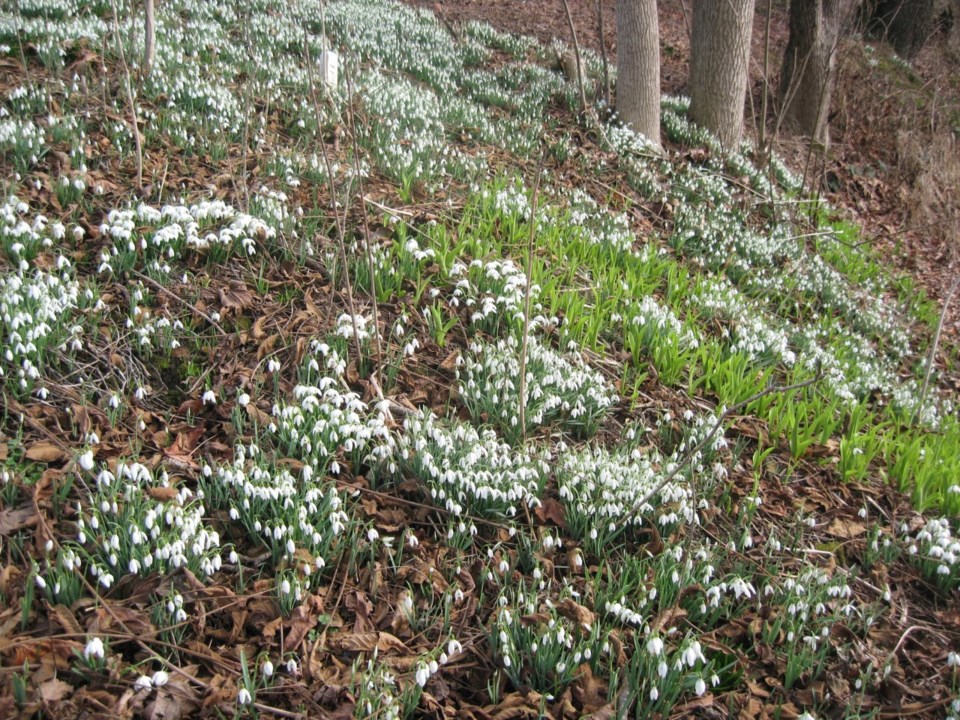The following column was submitted to the Tri-City News from Brian Minter — master gardener, best-selling author, Order of Canada recipient and co-owner of Minter Country Garden Store.
November is an important month for many things in our gardens.
1. It’s the last chance to plant garlic for harvest next July. Raised beds, sandy soil and a sunny location are key. Russian and Elephant garlic are usually the most successful in our area. Plant at a depth 3 to 4 times the width of the clove.
2. For colour in late December and January, plant yellow winter aconites and snowdrops as soon as possible. They are best planted in and around shrubs or evergreen perennials, like Japanese azaleas, dwarf conifers, euphorbias, colourful heucheras and new sedums, like golden ‘Angelina’.
3. Tone up your lawn, keep it green and help it bounce back quickly in spring by applying a stabilized nitrogen fertilizer like 32-0-10. West Coast turf trials endorse this application. Now is also the time to apply Dolopril or organic eggshell lime to our lawns to prevent the soil from becoming too acidic over the winter months.
4. Bare patches in our vegetable gardens could be planted with either fall rye or Rejuvenation Mix that actually fixes nitrogen in the soil as it grows. These are great organic ways to improve the quality of your soil for next year.
5. It’s time to tidy up your roses for winter by simply pruning lightly (about 2 to 3 feet) and by cleaning up any dead wood. Climbers should be retrained on arbours and trellises and cut back to about 4 to 6 feet. Leave only 4 to 5 canes and cut out the rest. Apply about 12 to 15 inches of protective mulch or even soil over the bud unions. Tree roses need to be wrapped with wire from top to bottom and sawdust or bark placed on the inside to protect both the top and bottom graft.
6. Most hedging cedars, junipers and other ‘non bud’ forming conifers can be tidied up and pruned to make them less susceptible to heavy snow damage. Pruning of spruce trees, firs and pines should be left until the end May. Non-flowering broad-leaved plants, like laurels, photinias and boxwood, can also be tidied at this time of year.
7. At the end of the month, our last two hardy annual plants must be lifted to ensure their protection for winter. All tuberous dahlias and canna roots need to be cut back, carefully lifted with forks, cleaned, dried and stored cool (40°F 4.5°C) over the winter.
8. All tropical indoor plants summering outdoors must be inside now. They need to be thoroughly checked for insects and stored cool (10°C/50°F) with lots of light. It is best if fuchias, lantanas and Angel Trumpets are stripped of their leaves. Keep them just moist.
9. As late summer and fall herbaceous perennials finish and look messy, prune them to the ground and apply compost or manures to build up the soil for next year. Plant winter pansies, violas and hardy evergreen perennials and grasses in bare areas for a great look all winter and plant bulbs in among them for a real treat next spring.
10. Is late fall a riot of colour in your garden? If not, look at all the outdoor colour potential in other gardens and in garden stores at this time of year, from winter-flowering Heather, fragrant Viburnum ‘Pink Dawn’, ‘Sasanqua’ Camellias and ‘Winter Sun’ Oregon Grape to evergreen Viburnum ‘Spring Bouquet’ and so much more!




